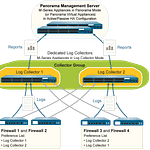How to Install GNS3 on Mac Silicon (M1 / M2 / M3)
Installing GNS3 on Mac Silicon requires a few extra steps due to architecture differences. However, by using OrbStack, you can easily create a Linux environment that supports GNS3 On Mac Silicon M1/ M2 / M3. Follow the steps below to get started.
🔧 Prerequisites
Before diving in, you’ll need to download and install OrbStack — a lightweight tool for managing Linux VMs on macOS with Rosetta integration.
🧠 Tip: An OrbStack Linux VM with Rosetta is essential for running GNS3 on Apple Silicon smoothly.
🛠️ Installation Steps
1. Prepare Your Terminal Environment
First, open your preferred terminal. We’ll perform most of the setup via the command line.
Then, navigate to your Downloads folder:
cd ~/Downloads
2. Clone the GNS3 OrbStack Repository
Next, clone the required GitHub repository:
git clone https://github.com/mweisel/gns3-server-orbstack.git
Once cloned, move into the project directory:
cd gns3-server-orbstack
3. Set Up a Python Virtual Environment
After that, initialize a Python virtual environment using:
source init_venv.sh
Then, verify that Ansible was installed correctly:
ansible --version
4. Start OrbStack (If Not Already Running)
Now, check whether OrbStack is active. If it isn’t, start it:
orb status || orb start
5. Create the GNS3 Linux Machine
At this point, create the Linux VM using:
orb create --arch amd64 ubuntu:noble gns3
⏱️ This usually takes less than a minute, depending on your internet speed.
To verify it’s running, use:
orb list
Expected output:
NAME STATE DISTRO VERSION ARCH
gns3 running ubuntu noble amd64
6. Test Connectivity with Ansible
Once the VM is ready, test connectivity:
ansible all -m ping
Expected result:
"ping": "pong"
7. Deploy the GNS3 On Mac Silicon M1/ M2 / M3
Now that connectivity is confirmed, deploy the GNS3 On Mac Silicon M1/ M2 / M3 using:
ansible-playbook server.yml
🛋️ Feel free to relax — this step is automated and typically takes less than 10 minutes.
8. Confirm the Installation
After deployment, confirm the server is working:
curl -s http://gns3.orb.local:3080/v2/version
9. Launch the GNS3 Web Interface
Next, open the Web UI in your browser:
open http://gns3.orb.local:3080
10. Deactivate the Python Environment
Once done, deactivate your virtual environment:
deactivate
🖥️ Final Client Configuration
To complete setup, connect your GNS3 client to the server:
- Launch the GNS3 client app.
- Go to Settings → Server → Main server tab.
- Enter the following:
- Protocol: HTTP
- Host:
gns3.orb.local - Port:
3080
- Finally, click OK to save.
🔄 GNS3 Usage Workflow
Here’s how to use GNS3 going forward:
✅ Start Services
First, start OrbStack and the gns3 Linux machine:
orb status || orb start
orb start gns3
Alternatively, you can use the OrbStack GUI.
Then, launch the Web UI:
open http://gns3.orb.local:3080
🧪 Perform Lab Work
Once you’re in:
- Start your devices in GNS3.
- Save configurations (e.g.,
copy run start,wr mem). - Continue lab work as needed.
❌ Shut Down Properly
When finished:
- Stop all devices in GNS3.
- Close the GNS3 client.
- Shut down the Linux VM:
orb stop gns3
Or do so via the OrbStack GUI.
🎉 You’re All Set!
In conclusion, you now have a fully functional GNS3 lab running on a Mac with an M1, M2, or M3 chip — all thanks to OrbStack and some smart configuration. Happy labbing!
Author Profile

Latest entries
 Tips & TricksNovember 7, 2025master_not_discovered_exception in Palo Alto Networks Log Collector
Tips & TricksNovember 7, 2025master_not_discovered_exception in Palo Alto Networks Log Collector Tech NewsAugust 17, 2025Malware Analysis For Remcos Remote Access Trojan (RAT)
Tech NewsAugust 17, 2025Malware Analysis For Remcos Remote Access Trojan (RAT) Tech NewsJune 10, 2025How to register and install iOS 26, iPadOS 26, and macOS Tahoe
Tech NewsJune 10, 2025How to register and install iOS 26, iPadOS 26, and macOS Tahoe Tech NewsJune 1, 2025How to Install Cisco and Juniper Images in EVE-NG
Tech NewsJune 1, 2025How to Install Cisco and Juniper Images in EVE-NG



0 Comments